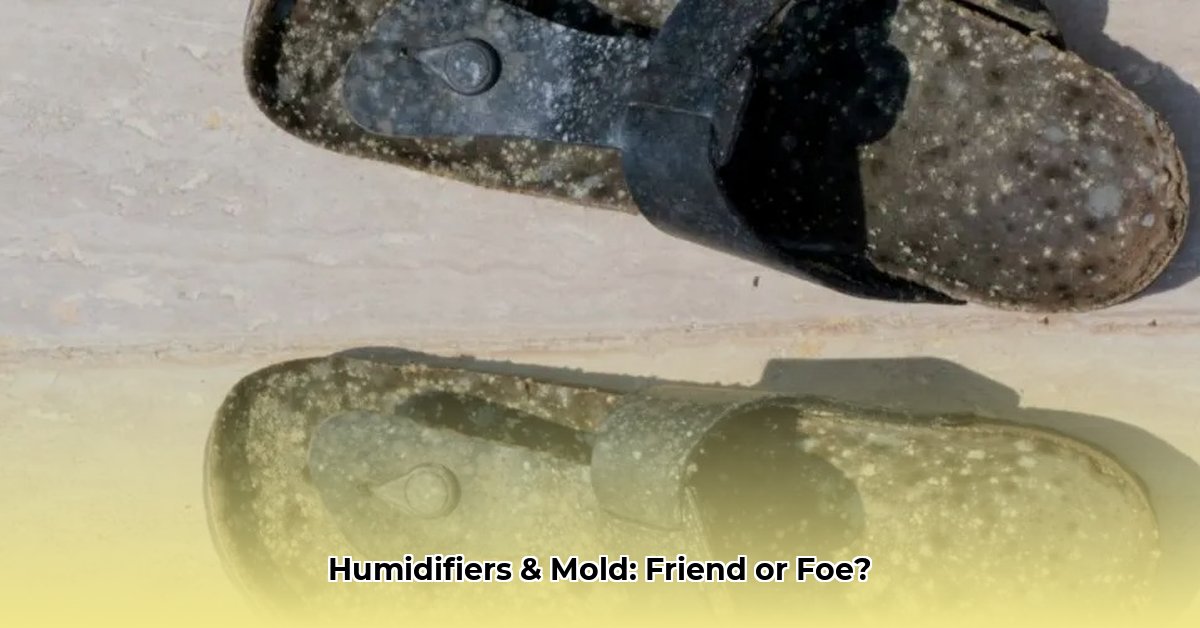Do humidifiers cause mold? Not directly, but they can create a favorable environment for mold growth if not used and maintained properly. By following a few simple steps, you can prevent mold from becoming a problem and enjoy the benefits of a humidifier without worry. These include regular cleaning, proper placement, and controlling humidity levels.
Understanding Mold and Humidity
Mold spores are everywhere, just waiting for the right conditions to grow. These microscopic travelers love damp, warm environments, and a humidifier, if not properly maintained, can inadvertently provide the perfect breeding ground. Moisture is key. While added humidity can be beneficial for dry skin and sinuses, levels above 60% create a mold-friendly environment. Condensation on your windows during colder months? That’s a potential red flag suggesting high indoor humidity, a prime condition for mold.
Choosing the Right Humidifier and Placement
The type of humidifier you choose can influence mold growth. Cool mist humidifiers are generally preferred over warm mist types, as warm mist models can release mineral particles into the air, potentially providing additional food for mold. Placement matters, too. Avoid putting your humidifier directly against walls or furniture, as the mist can create damp spots ideal for mold growth. Allow for good air circulation around the device. Additionally, look for humidifiers with antimicrobial features for added protection.
Preventing Mold in Your Humidifier: A Step-by-Step Cleaning Guide
Regular cleaning is your best defense against mold. Here’s a simple routine:
- Daily Rinse: Empty and rinse the water tank with clean water every day. This removes lingering mold spores or other contaminants.
- Weekly Deep Clean: Once a week, use a solution of equal parts water and white vinegar or a 3% hydrogen peroxide solution to clean all removable parts of your humidifier. Follow the manufacturer’s instructions, as cleaning procedures may vary. For stubborn mold spots, a paste of baking soda and hydrogen peroxide can be effective.
- Thorough Drying: After each cleaning, dry all parts completely. Mold thrives in dampness, so ensuring everything is bone dry is essential.
Here’s a visual guide to cleaning a humidifier:
[Insert image or video demonstrating proper cleaning techniques]
Identifying and Remediating Mold Growth in Your Home
Suspect a mold problem? Look for discoloration (often black, green, or white fuzzy patches) and a musty odor. For small mold spots on hard surfaces, a bleach and water solution (1 part bleach to 10 parts water) can be effective. Always test in an inconspicuous area first. For larger areas, consult a professional mold remediation specialist. They have the knowledge and equipment to safely and thoroughly handle the situation.
Managing Home Humidity
A hygrometer can help you monitor and maintain ideal humidity levels (30-50%). If humidity climbs too high, open a window, run exhaust fans, or use a dehumidifier. Using distilled or demineralized water in your humidifier can also help prevent mineral buildup, which mold can feed on. Some studies suggest that adding a few drops of tea tree or eucalyptus oil to the water may inhibit mold growth, although more research is needed to confirm this.
Frequently Asked Questions (FAQ)
-
Can I use tap water in my humidifier? While possible, it’s not recommended. Tap water contains minerals that can promote mold growth and clog your humidifier. Distilled or demineralized water is best.
-
How often should I replace my humidifier filter? Follow the manufacturer’s recommendations. Generally, every 1-3 months, or more frequently with heavy use.
-
What if I already have mold in my humidifier? A thorough cleaning might suffice for minor mold growth. However, if mold persists, consider replacing the humidifier.
Quick Reference Guide: Maintaining a Mold-Free Humidifier
| Factor | Recommendation |
|---|---|
| Ideal Humidity | 30-50% |
| Water Tank Rinse | Daily |
| Deep Clean | Weekly |
| Filter/Wick Replacement | As recommended by the manufacturer |
| Water Type | Distilled or demineralized |
| Mold Indicators | Musty odor, visible growth |
Take Action!
By following these simple practices, you can enjoy the benefits of a humidifier without the worries of mold. Consistent cleaning and mindful humidity control are key. If you suspect a significant mold problem, don’t hesitate to contact a professional for expert advice. Remember, maintaining a healthy indoor environment is an ongoing process, and staying informed about best practices is always beneficial. While research on mold and its health effects continues to evolve, taking preventative measures is always a wise step.
- Dora the Explorer Wipe-Off Fun: Safe & Mess-Free Activities for Little Explorers - April 18, 2025
- Does Lemongrass Repel Mosquitoes? Fact vs. Fiction + How to Use It - April 18, 2025
- Do Woodchucks Climb Trees?Fact vs. Fiction - April 18, 2025










